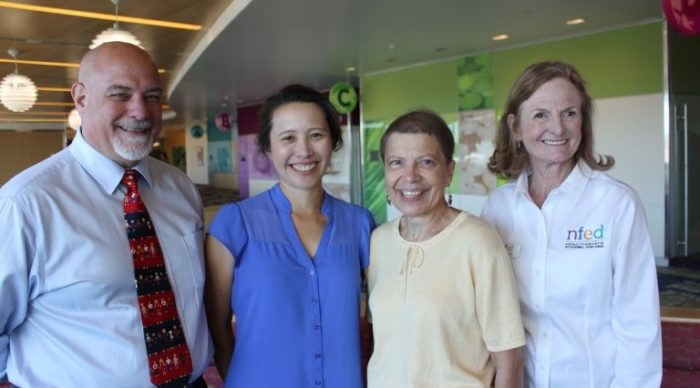
Since the 1980s, the National Foundation for Ectodermal Dysplasias has provided more than $3 million in funding for research studies. Our research impact wouldn’t be possible without dedicated scientists and partners as well as families and individuals who volunteer to participate.
Shape Our Futures With Research
Ectodermal dysplasia can cause a lifetime of challenges. By supporting research, you expand early diagnostics, treatments, pathways toward cures… and hope!
Donate to Boost the CureLearn more about the research that’s helping us classify, diagnose and treat ectodermal dysplasias—and putting us on a path to finding cures.
X-Linked Hypohidrotic Ectodermal Dysplasia Studies
The NFED has supported many studies that led to the EDELIFE clinical trial, which is studying a potential, prenatal treatment for XLHED in boys. Get up to speed on the latest developments and past work.
Learn About XLHED ResearchP63 Syndrome Studies
Syndromes like AEC, EEC, ADULT, and limb-mammary are caused by mutations in the p63 gene. Current research is focused on the treatment of related skin erosion and corneal abrasions.
- Ankyloblepharon-Ectodermal Dysplasias-Clefting Syndrome (AEC) Studies
- Ectrodactyly-Ectodermal Dysplasia-Clefting Syndrome (EEC) Studies
Goltz Syndrome Studies
Previous research efforts focused on Goltz syndrome, also known as focal dermal hypoplasia, have helped us better understand diagnosis and causes of short stature.
Learn About Goltz Syndrome ResearchType Unknown Studies
In partnership with Baylor College of Medicine, the NFED is working with families without a specific diagnosis to learn more about the genetic roots of ectodermal dysplasias.
Learn About Type Unknown ResearchEctodermal Dysplasia Classification Studies
Researchers around the world worked for more than a decade to define ectodermal dysplasia and create a classification system. Our findings are now ready!
Learn About Classification Research